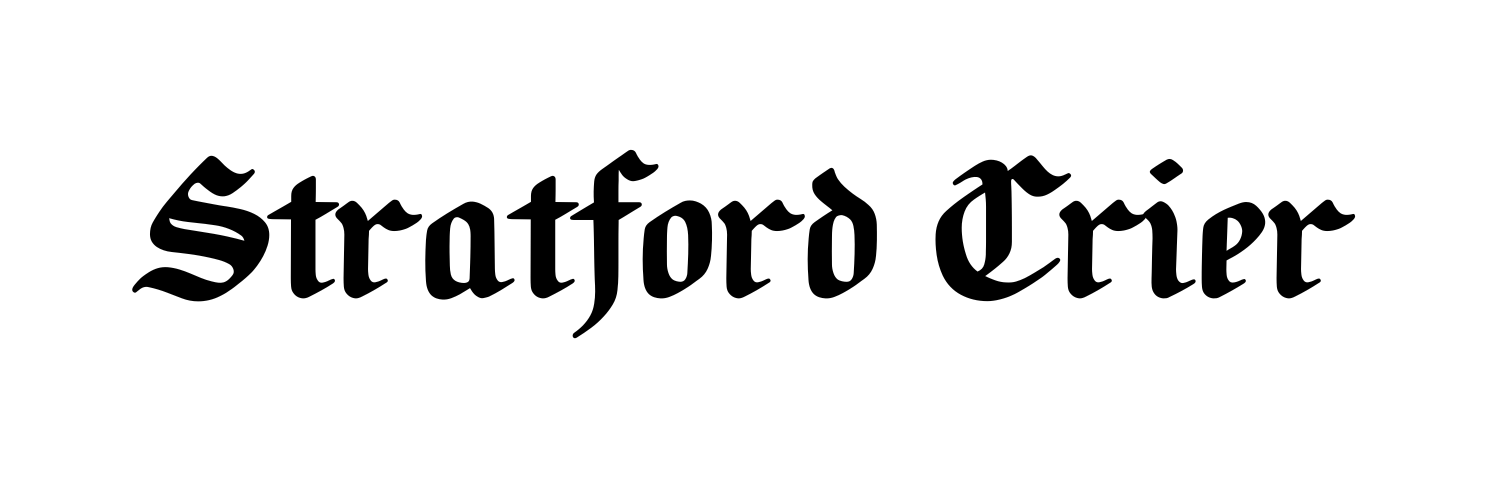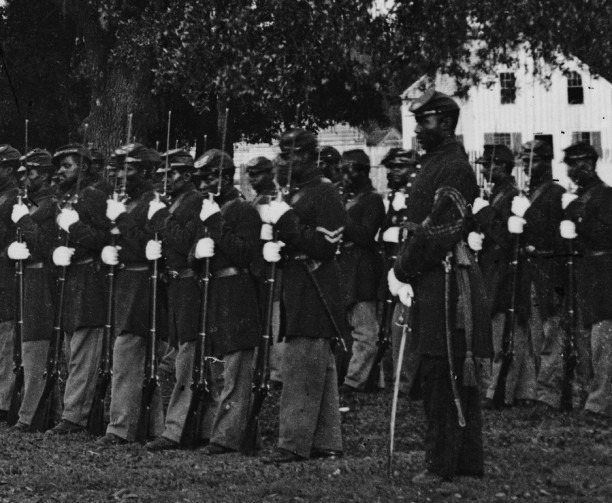29th Connecticut Colored Infantry Regiment
Among the first Union Soldiers to enter a Fallen Richmond in 1865, the 29th have not always been Lauded or even Acknowledged
Source: ConnecticutHistory.org, FamilySearch.org
In 1863, President Lincoln authorized the formation of Black combat units to serve in the Civil War. However, Connecticut was slow to organize them, and Blacks were told, “This is not a fight for or about the Negro.” Consequently, Black volunteers from Hartford had to travel to Massachusetts (54th and 55th Infantry) and to Rhode Island (14th Rhode Island Heavy Artillery) to enlist.
Throughout the war, President Abraham Lincoln depended on individual Union states to recruit regiments and send them to the battlefield. Each regiment generally had 1,000 men divided into 10 companies. Once African Americans were allowed to serve, Connecticut’s governor and legislature decided in November 1863 that the 29th would be a black regiment. Eventually, Connecticut’s Governor Buckingham ordered the formation of a Black infantry unit, and in response the 29th Connecticut Volunteer Infantry was quickly assembled.
The 29th Connecticut was recruited when the Union was in difficult times: the first two years of the Civil War had claimed the lives of tens of thousands of Americans, and the Union army was running very short on manpower. A military draft soon became necessary and proved incredibly unpopular; yet, there were thousands of African American men who were eager to fight but not allowed to serve because of their race. In late 1862 the United States government finally allowed African Americans to enlist, but only in separate black regiments.
After the ranks of the 29th Connecticut Regiment had been filled, Governor Buckingham authorized the formation of another Black unit, the 30th Connecticut Volunteer Infantry Regiment. Recruitment for it began on 12 January 1864, but the urgent need for front line troops in Virginia meant that it had to be sent there before its ranks were entirely filled. The 30th Connecticut Colored Infantry Regiment was raised from 400 excess volunteers of 1,200 who had responded in the autumn and winter of 1863 to a call by Governor Buckingham for recruits to the 29th Connecticut Colored Infantry Regiment. The two regiments were raised side-by-side in the Fair Haven area of New Haven, where they were addressed by Frederick Douglass on 29 January 1864. Although the 29th would go on to serve in the war, the 30th was merged into the 31st Infantry Regiment on 18 May 1864.
Comprised of ten companies totaling approximately 1,000 men, the 29th Colored Volunteer Infantry (CVI) was presented with its first battle flag, a 33-star US banner, by a local minister, the Reverend Dr. Mott, on March 8, 1864, in the Fair Haven section of New Haven, Connecticut. The men made no show of emotion during the formal ceremony, recalled Isaac J. Hill in his book, A Sketch of the 29th Regiment of the Connecticut Colored Troops, “on account of the Regiment not receiving the $75 which was promised to them at their enlistment.” A little over a week later, on March 19, the New Haven Daily Palladium reported that a local black woman presented to the unit its second battle flag—its regimental colors. As the dark blue silk flag was handed over to the unit’s new commander, Colonel William B. Wooster of Derby, the father of one of the unit’s officers, the Reverend Dr. Leonard Bacon, gave a long and passionate speech in which he told the soldiers, “We give you this flag to march under which tells you that you are a Connecticut regiment, and it is our confident expectation that you as a regiment will do honor to the State of Connecticut, as well as to the stars and stripes. And in order to do this, you must bring back this flag when you return, without any dishonor.” Bacon concluded by reminding the 1,005 soldiers that as men of color, they would need to prove “worthy of the respect of fellow men,” in particular, whites. Immediately following the ceremony, as the regiment marched towards the wharf where the steamship Warrior was waiting to take them to the front, the soldiers could be heard shouting, “We’ll show you we can fight! We’ll show you that we are men!”
Through the remaining months of 1863, African American men from across the state poured into the training camp in the Fair Haven section of New Haven, and by January 1864 the 29th Regiment Connecticut Volunteers was full. One of the recruits, Alexander Newton, was the son of a slave who “longed for an opportunity and the power to play the part of a Moses” for his people still in slavery. Newton recorded his time with the 29th Connecticut Volunteers in an autobiography, later published.
In March 1864, the men paraded through the streets of New Haven and, according to soldier J.J. Hill, “white and colored ladies and gentlemen grasped me by the hand, with tears streaming down their cheeks…expressing the hope that we might have a safe return.” With Colonel William B. Wooster of Derby as the unit’s leader, the men boarded a steamship bound for the South Carolina coast.
Sent to Virginia in the summer of 1864, the 29th Connecticut fought many small battles when Union and Confederate armies were locked in a siege between Richmond and Petersburg. During one of those battles, Newton fearfully remembered “a twenty-pound cannon ball coming towards me…through the smoke. It looked like it had been sent especially for me.” In September 1864, the 29th Connecticut helped take Fort Harrison, located less than 10 miles from the Confederate capital in Richmond. On October 13, the regiment participated in a scouting mission which led to the Battle of the Darbytown Road, and two weeks later the men pushed the Confederate army back at the Battle of Kell House, which resulted in over 150 casualties and many captured soldiers. In April 1865, the Confederate line finally broke, and Richmond was evacuated. The 29th took part in the last attacks, which emptied the Confederate defensive trenches, and men of the regiment were among the first Union soldiers to march triumphantly through the streets of Richmond. The war had ended, but the 29th reported for duty, this time in Texas. While there, the men reunited with Connecticut friends from the 31st United States Regiment.
Many white Americans were uncomfortable with the idea of making black regiments, and it was determined that white officers would lead the unit. Stratford has at least two soldiers that were in the 29th ; Mathias Blake, a sergeant in the division, who was mustered on January 5th , 1864, and mustered out on October 24th , 1865. and Edwin
Freeman, a black man who was a musician. Musicians did whatever was needed—staffed ambulances, tended wounded, and even fought as the war raged on. More formal than the fife-and-drum corps, bands were assigned to Army units. Regulations stipulated up to 24 musicians a band; in practice this number varied greatly. Freeman was mustered in on January 2 nd , 1864 and was mustered out on October 24th , 1865.
By late 1865, the 29th Connecticut and the Connecticut men from the 31st United States Regiment were ordered back home and arrived in Hartford in November. All were honorably discharged from service during a large celebration, during which Governor William Buckingham thanked the men for their service and noted that “…although Connecticut now denies you privileges which it grants to others…the voice of a majority of liberty-loving freemen will be heard demanding for you every right and every privilege.” Though this prognosis proved to be optimistic, Connecticut’s African American troops had indeed moved the cause for equality forward.

